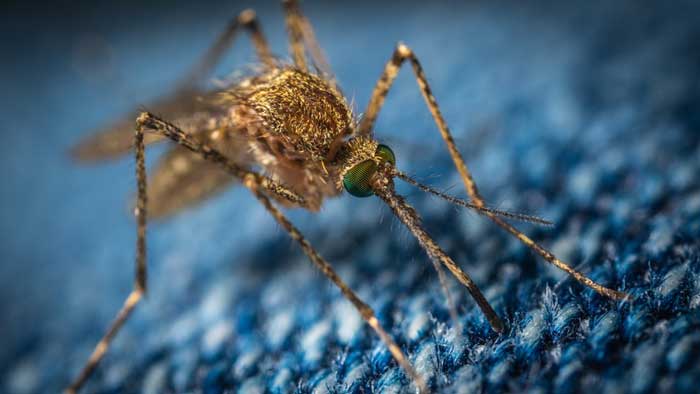 Having a favorite pet in the family is definitely good. The pet gives joy and positive energy every day. If there are small children in the family, they can learn compassion, mercy, and care for those who are weaker, when the kids take care of them. If there are no contraindications from the medical point of view, the animal can be kept in the house where there is a baby.
Having a favorite pet in the family is definitely good. The pet gives joy and positive energy every day. If there are small children in the family, they can learn compassion, mercy, and care for those who are weaker, when the kids take care of them. If there are no contraindications from the medical point of view, the animal can be kept in the house where there is a baby.
However, since we treat our health and the health of our children responsibly, we are expected to realize the importance of taking care of our pets’ health as well. Like people, they get sick, sometimes they get severely ill, and the owners’ task is to visit the vet in a timely manner and have the animal vaccinated. Otherwise, a sick pet can “share” its diseases with its careless owners. Let us consider some of the most common and very dangerous for humans diseases.
Toxoplasmosis
Wild and domestic animals are susceptible to this disease. The infection can be transmitted from them to humans and is characterized by damage to the nervous system. In animals, more often in dogs, depression of the general condition, weakness, secretion from the eyes and nose, paleness of the visible mucous membranes, cough, vomiting, shortness of breath, and fever are often observed. The infection can spread via household items, but one can also get infected through contact, via the gastrointestinal tract, and respiratory organs.
Even flies can be a carrier of the infection. The latter is also transmitted in a transplacental way, from mother to fetus. The pathogen is contained in sputum, saliva, vomit, urine, feces, milk, and meat. Toxoplasma causes severe illness in humans. The clinical manifestations of toxoplasmosis in humans are extremely diverse.
Patients suffer from weakness, decreased performance, fever, headaches, sleep disorders, poor memory, loss of appetite, muscle and joint pain, interruptions in heart function, and even bronchitis. If you suspect toxoplasmosis, you need to contact the medical and veterinary institutions.
Rabies
An acute severe infectious disease, transmitted with saliva from animal bites, rabies is most common not only in dogs but also in wild animals and birds. In dogs, it manifests itself with hoarse barking, convulsions, violation of swallowing, a shaky gait, and water fear.
In humans, the following symptoms of rabies can be observed: general malaise, low-grade fever, pain in the area where the infection entered the body, headaches, sleep disorders, loss of appetite, apathy, irritability, constipation, various phobias: fear of water, air, sounds and light, respiratory muscle paralysis.
The tactics for suspected rabies is to isolate the sick animal. Next, you need to inform the veterinarian. Infected people should be sent to the nearest medical facility for vaccinations against rabies.
Brucellosis
A disease that often occurs among wolves, foxes, hares, sparrows, pigeons, and pheasants. A person most often becomes infected by eating the meat of an infected animal or by cutting animal carcasses. Brucellosis is characterized by the following symptoms: fever up to 40 degrees, agitation, euphoria, insomnia, headache, sweating, indisposition, weakness, loss of appetite, liver and spleen enlargement, lymph node enlargement, muscle, and joint pain.
To prevent the disease, you should follow the rules of personal hygiene. In case of illness, one has to consult a doctor.
Tularemia
This is an infectious disease, most common in rodents and fur animals. Humans get infected through contact, via the gastrointestinal tract, by airborne droplets, through bites of blood-sucking insects, or while cutting the carcasses of sick animals. The disease begins with an increase in body temperature up to 38-40 degrees, weakness, muscle pain, headache, flushing of the face, conjunctiva, mucous membranes of the oral cavity, and nasopharynx, pastosity, sclera injection, rash, and a drop in blood pressure.
The disease can be avoided by exterminating rodents and parasitic arthropods, drinking boiled water only, protecting wells from rodents, disinfecting skins and carcasses, and sticking to personal hygiene rules.
Ornithosis
This is an infectious disease of domestic and wild birds (chickens, pheasants, ducks, pigeons, gulls, parrots, etc.) and humans. Infecting humans is possible in case of post-slaughter processing of poultry, such as plucking feathers and cutting carcasses. In birds, the disease has a hidden course, and in people, it begins with chills, weakness, accompanied by headache and pain in the joints.
At the same time, people develop a fever with temperatures up to 39-40 ° C, thirst, dry mouth, myalgia and arthralgia, sore throat, runny nose, hyperemia of the pharyngeal mucosa, laryngitis, conjunctivitis, nasal bleeding, skin rash, chest pain, cough, liver enlargement, headache, and insomnia.
If a disease is suspected, it is imperative to consult a doctor. Sometimes it is necessary to turn to an infection hospital. Nonspecific preventive measures include strengthening of the veterinary control over the breeding of birds on poultry farms and in zoos, as well as the destruction of infected livestock.
Trichophytosis (Ringworm)
This is a fungal infection of the scalp and cheeks, where small, grayish-pink patches of skin with uneven contours and slight scaling are formed. In the lesion area, most of the hairs are broken off at the level of the skin or 2-3 mm from it, and if the hair on the head is dark, dark spots, or hair stubs, can be seen.
Human infection occurs often from dogs and cats. Trichophytosis can be prevented by avoiding contact with homeless animals, conducting regular inspection of domestic animals, including those that are not in contact with wild ones.
Anthrax
This is an acute severe infectious disease of animals and people. It is possible to get infected through contaminated animal feed, through the wastewater of enterprises that process animal raw materials, through the bites of blood-sucking insects. The pathogens penetrate into the human body through cracks, abrasions, and injuries. Most often, people have a cutaneous form in which a carbuncle is formed, with the stages of a spot, a papule, a vesicle, and an ulcer.
From the very beginning, the disease is accompanied by significant intoxication (headache, weakness, adynamia, muscle pain, lower back or abdominal pain is possible), and fever. Careful following of general veterinary and sanitary measures while working with soil as well as compliance with the rules of personal hygiene is reliable protection from anthrax.
Leptospirosis
A disease that is very common in animals and dangerous enough for humans. Infection of people comes from animal excreta while swimming in a dirty pond. Leptospira penetrate the human body through the affected areas of the body: cuts and wounds, as well as through the mucous membranes.
The disease begins acutely with a sharp rise in temperature, severe symptoms of intoxication (intense headaches, myalgia, weakness, insomnia, anorexia), redness and swelling of the face, and the appearance of a herpetiform rash on the lips and wings of the nose.
Prevention of leptospirosis includes control over the diseases of farm animals and land, control of the state of water sources, vaccinating the people working with animals with spoilt leptospirosis vaccine.
Echinococcosis
A helminthic disease, which is called the larval stage of the helminth (cestode). Its ribbon-like form is parasitic in the small intestine of animals (dogs, wolves, foxes). The larval form occurs more often in the liver or lungs and less often in other organs of all farm animals and humans. Humans are infected after contact with sick animals.
Echinococcosis may be asymptomatic for years and decades; in the case of clinical symptoms, pathognomonic signs are absent. The clinical picture may include the following symptoms: pain at the site of cyst localization, weakness, urticaria, pruritus, peritonitis, pleurisy, jaundice, ascites, dislocations, pathological fractures, chest pain, cough, hemoptysis, etc.
Measures to prevent human infection are timely veterinary monitoring of the health of pets, regular animal sanitation, and compliance with measures of personal hygiene by their owners.
How to prevent diseases transmitted from pets?
Thus, regular visits to the veterinarian, timely preventive vaccination of domestic animals, compliance with safety measures while consuming meat and fish products, compliance with the rules of personal hygiene will allow you to avoid infectious diseases in your family and your pets. Pets will delight you and give a lot of positive emotions and feelings, helping you to teach children kindness, love, and care for our little friends.











